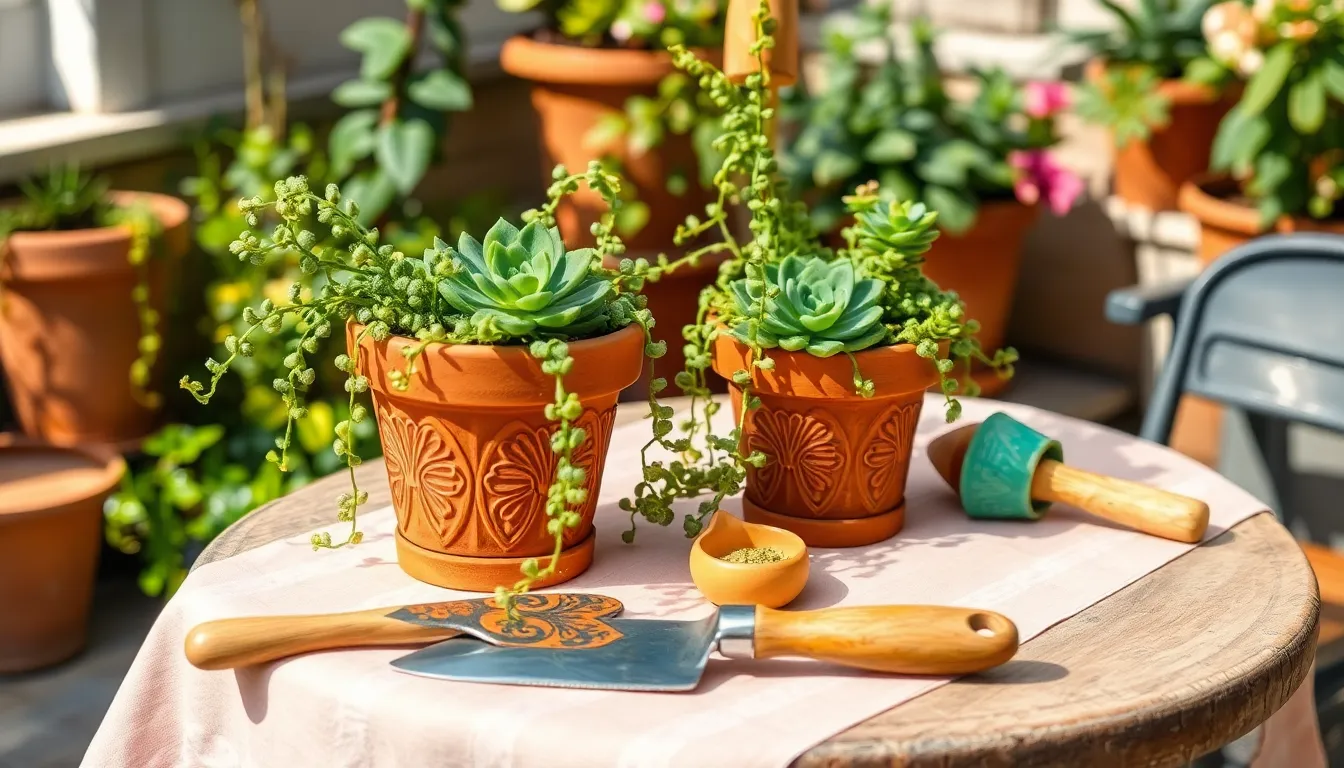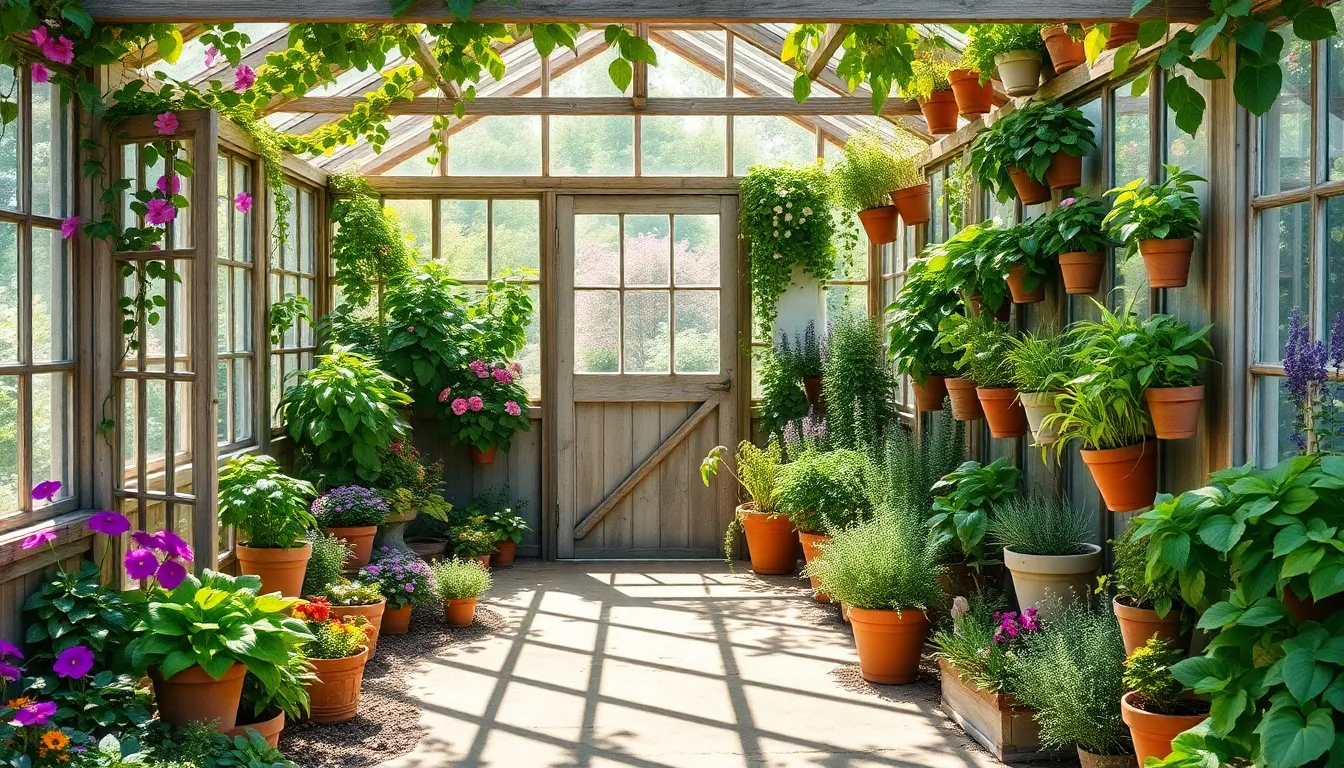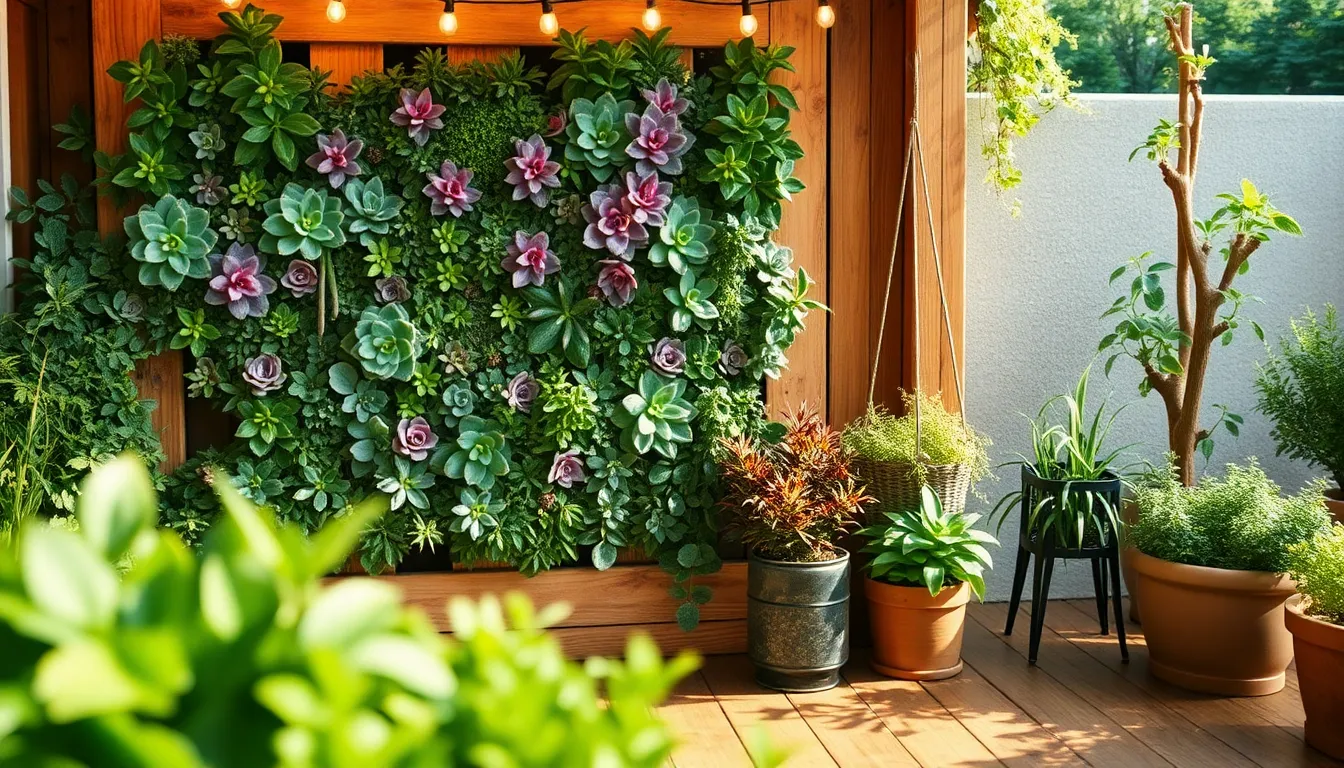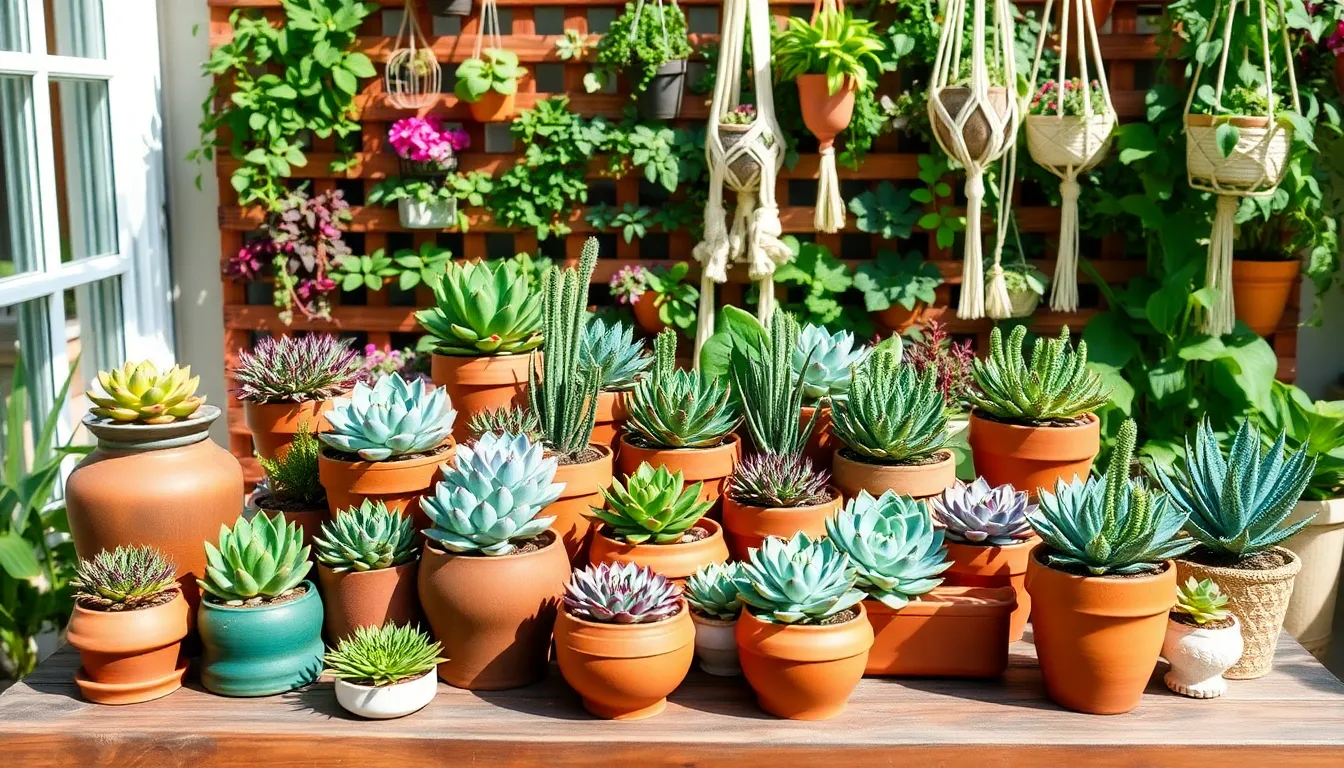Welcome to a world where your patio becomes a canvas, and every plant is a brushstroke of vibrant life! Whether you’re a novice gardener taking your first steps into the garden or a seasoned green thumb ready to transform your outdoor space, “15 Inspiring Patio Garden Ideas” is your guide to creating a lush, personal oasis. This collection of design ideas is more than just a list; it’s an invitation to rediscover the joy of gardening in a space you might have underestimated. Each idea is crafted to inspire creativity while offering practical solutions that cater to both small and large patios, ensuring success no matter your experience level.
In this guide, you’ll uncover ideas that effortlessly blend beauty with function, turning your patio into a delightful retreat that nurtures both plants and people. From cleverly utilizing vertical space to selecting the perfect plants for your unique environment, these designs promise to boost your confidence and maximize your gardening potential. Let the excitement of new possibilities motivate you, as you embark on a journey to transform your patio into a thriving, verdant sanctuary. With each page, you’re one step closer to experiencing the satisfaction and serenity that only a beautifully curated garden can provide.
Maximize Space with Vertical Planters
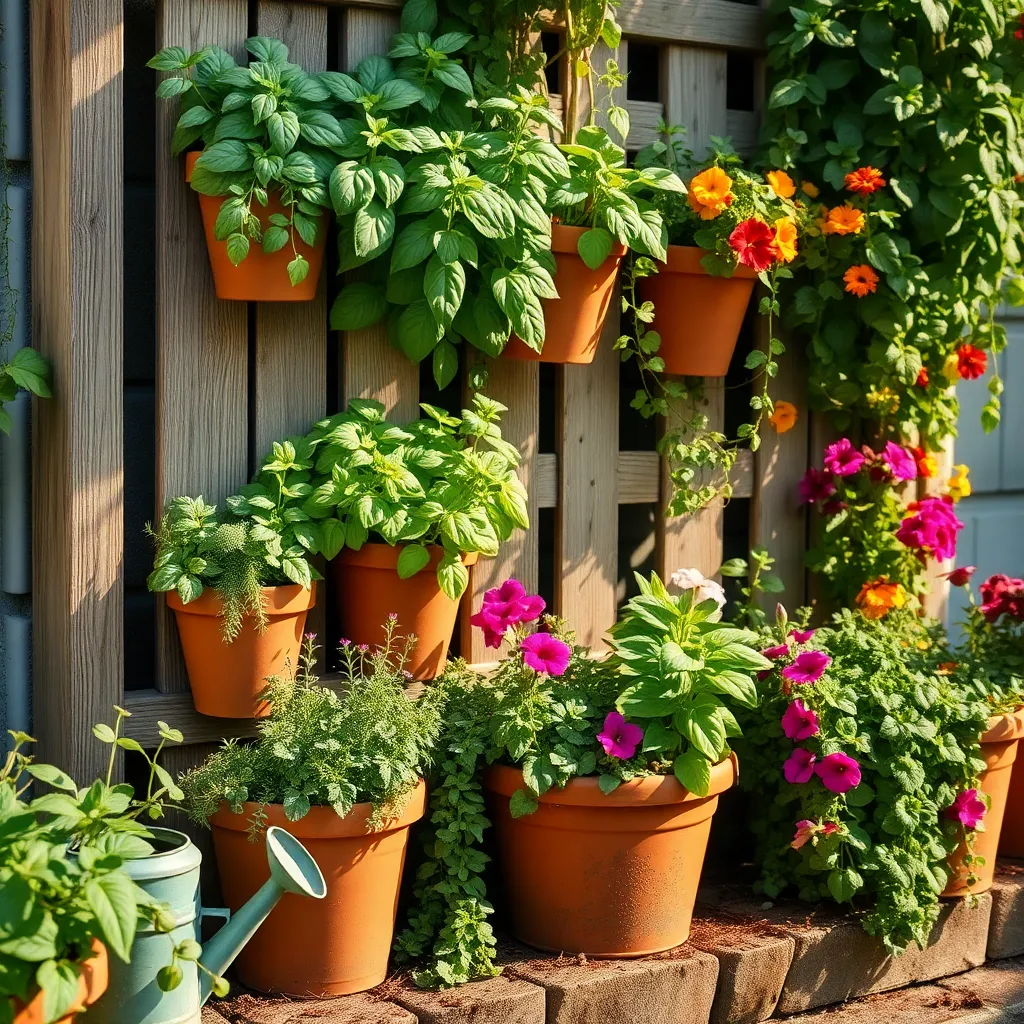
Vertical planters are a fantastic way to make the most out of limited space on your patio. By growing plants vertically, you not only save space but also create an eye-catching display that can enhance the aesthetic appeal of your outdoor area.
To get started, choose a sturdy frame or wall-mounted unit that can support the weight of your plants and soil. Ensure your vertical planter has good drainage to prevent waterlogged roots, which can lead to plant diseases.
For beginners, consider starting with easy-to-grow herbs like basil, mint, or parsley. These herbs thrive in shallow soil and require regular watering—usually every two to three days—but be sure to adjust based on your climate.
Advanced gardeners might experiment with vertical vegetable gardens, incorporating plants like cherry tomatoes or climbing beans. Use a high-quality potting mix rich in organic matter to provide the necessary nutrients and support for vigorous growth.
To maintain healthy plants, regularly inspect them for pests and diseases, especially in tight spaces where airflow might be restricted. Implement a fertilizing schedule tailored to your plant selection; many vertical planters benefit from a slow-release fertilizer applied every few months.
Choose Compact Plant Varieties
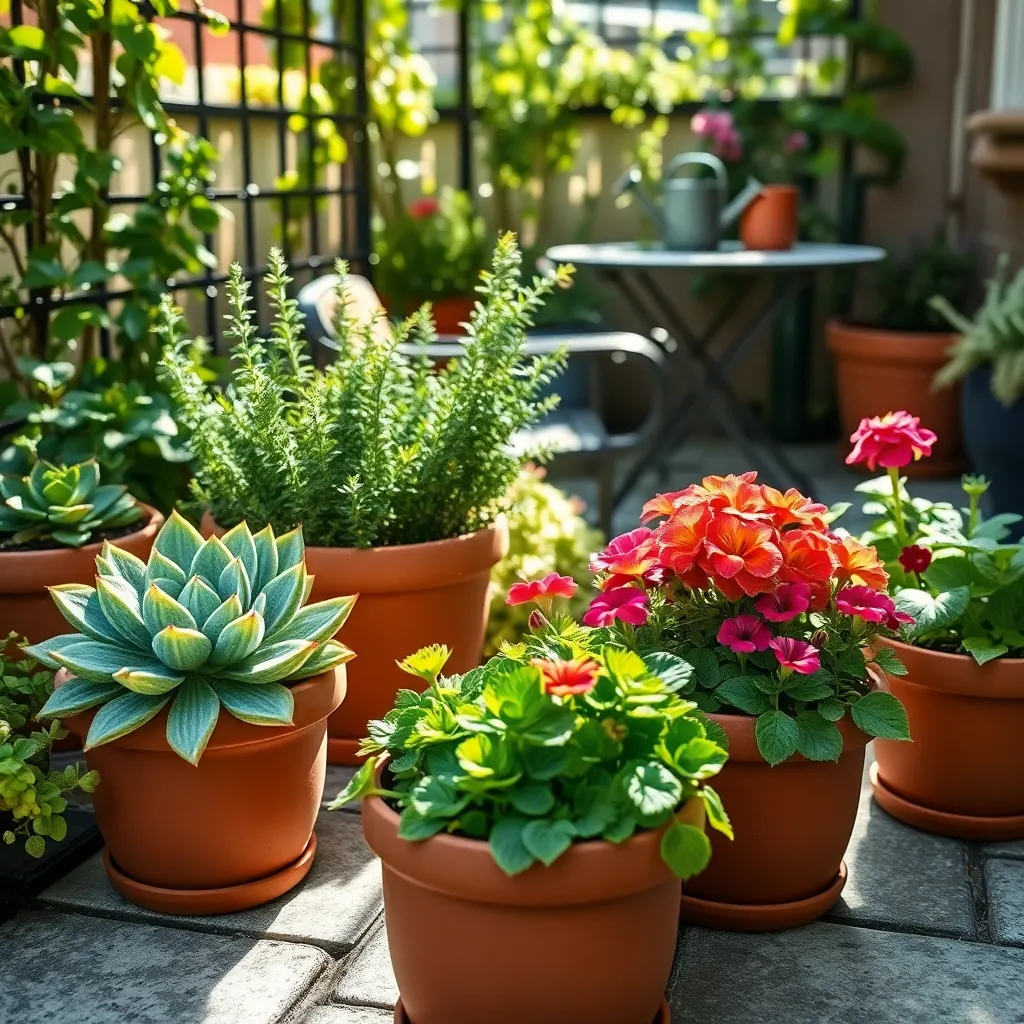
To make the most of your patio space, consider choosing compact plant varieties that thrive in smaller areas. These plants are specifically bred to have a smaller footprint, making them perfect for container planting on patios or balconies.
Opting for compact varieties doesn’t mean sacrificing beauty or yield. For example, compact tomatoes like ‘Tiny Tim’ or ‘Patio Princess’ can produce a bountiful harvest in a small space, requiring only a sunny spot and regular watering.
Beginners will find compact varieties easier to manage due to their reduced size and maintenance needs. Ensure your pots have good drainage and use a high-quality potting mix to provide the necessary nutrients for growth.
For more advanced gardeners, experimenting with companion planting can maximize the efficiency of your space. Pair compact herbs like basil or thyme with your small tomato plants to enhance flavor and repel pests naturally.
Watering is crucial when growing compact varieties in containers, as they can dry out quickly. Typically, a thorough watering once every few days is sufficient, but always check the top inch of soil to ensure it’s not too dry or too wet.
Incorporate Multi-Tiered Plant Stands
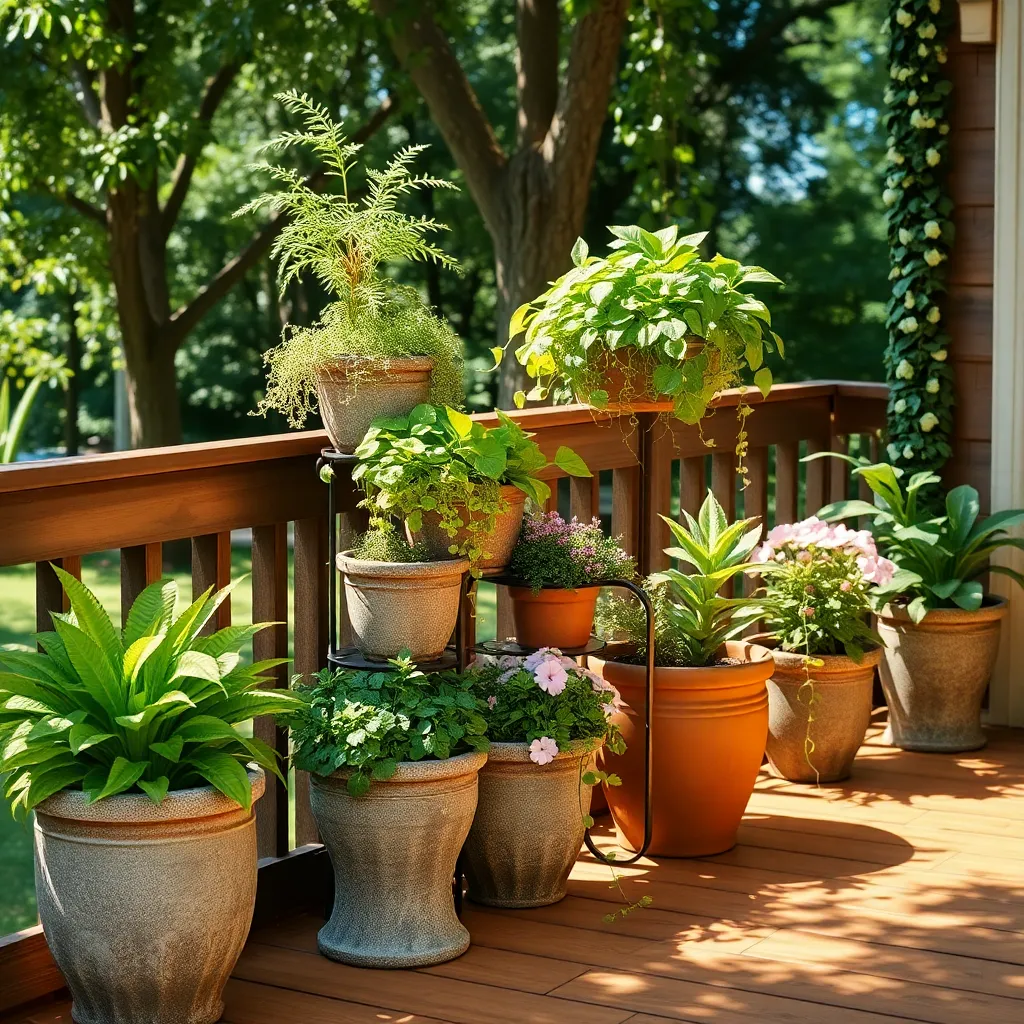
Multi-tiered plant stands are a fantastic way to maximize space and add visual interest to your patio garden. By elevating your plants, you can make use of vertical space, which is especially beneficial for small areas.
Consider the lighting needs of your plants when arranging them on the stand. Place sun-loving plants on the top tiers where they can receive the most light, and shade-tolerant species on the lower levels.
It’s vital to ensure that the plants you select for the stand are compatible in terms of watering needs. Group plants with similar water requirements together to simplify care and avoid overwatering or underwatering issues.
For beginners, start with easy-to-care-for plants like succulents or herbs, which thrive in well-draining soil and require minimal maintenance. Use a potting mix specifically formulated for the type of plants you are growing to ensure they have the best possible start.
Utilize Hanging Baskets Creatively
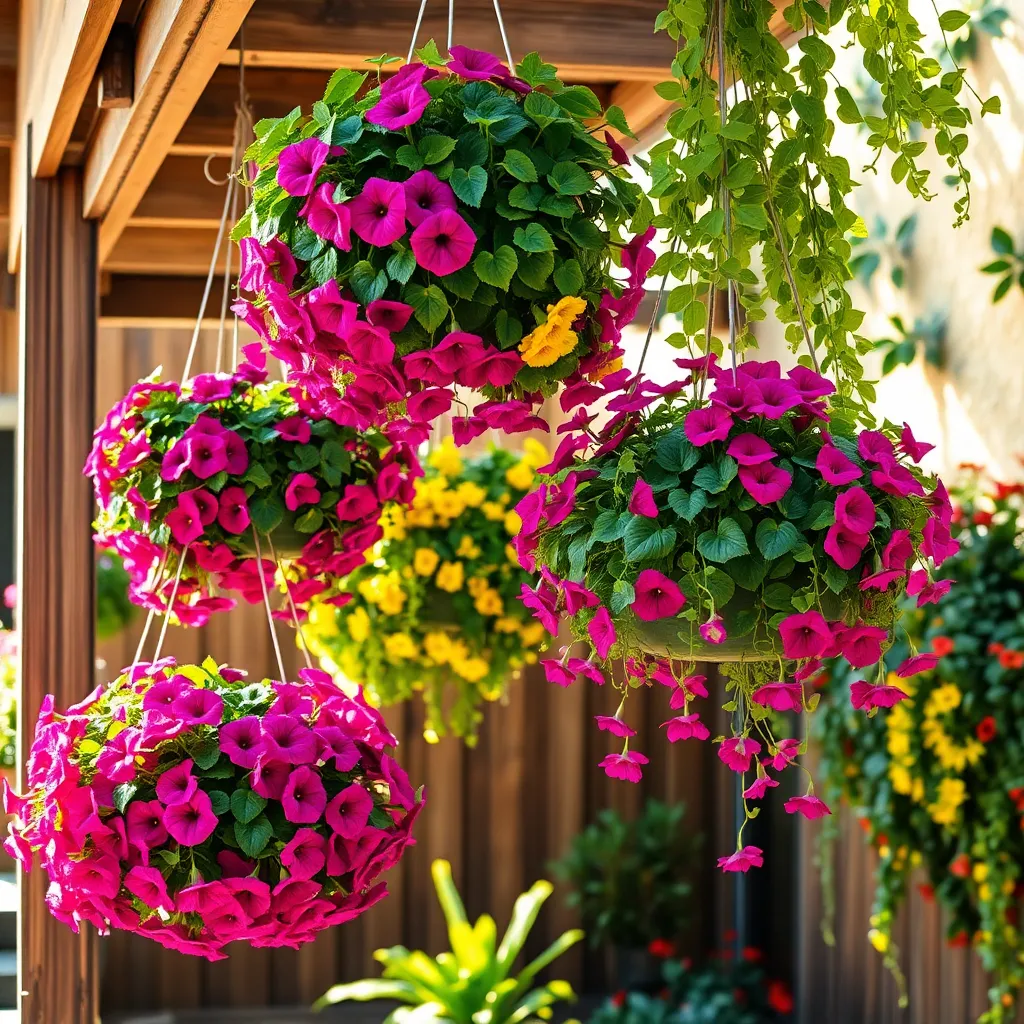
Hanging baskets offer a wonderful opportunity to introduce vertical interest to your patio garden. They can be used to maximize space, especially in smaller areas, by drawing the eye upwards and adding lush greenery at different heights.
Choose plants with cascading habits such as trailing ivy, petunias, or lobelia for a stunning visual effect. Ensure your chosen plants have similar light and water requirements for easier maintenance; for example, most annuals thrive in full sun with regular watering.
For those in warmer climates, consider using succulents in hanging baskets, as they require less frequent watering and can tolerate heat. Utilize a well-draining potting mix specifically designed for cacti and succulents to prevent root rot.
To keep your hanging baskets looking vibrant, incorporate slow-release fertilizer into the soil mix at the start of the growing season. Additionally, deadhead flowers regularly to promote continuous blooming and prevent the plants from becoming leggy.
Select Durable Outdoor Furniture
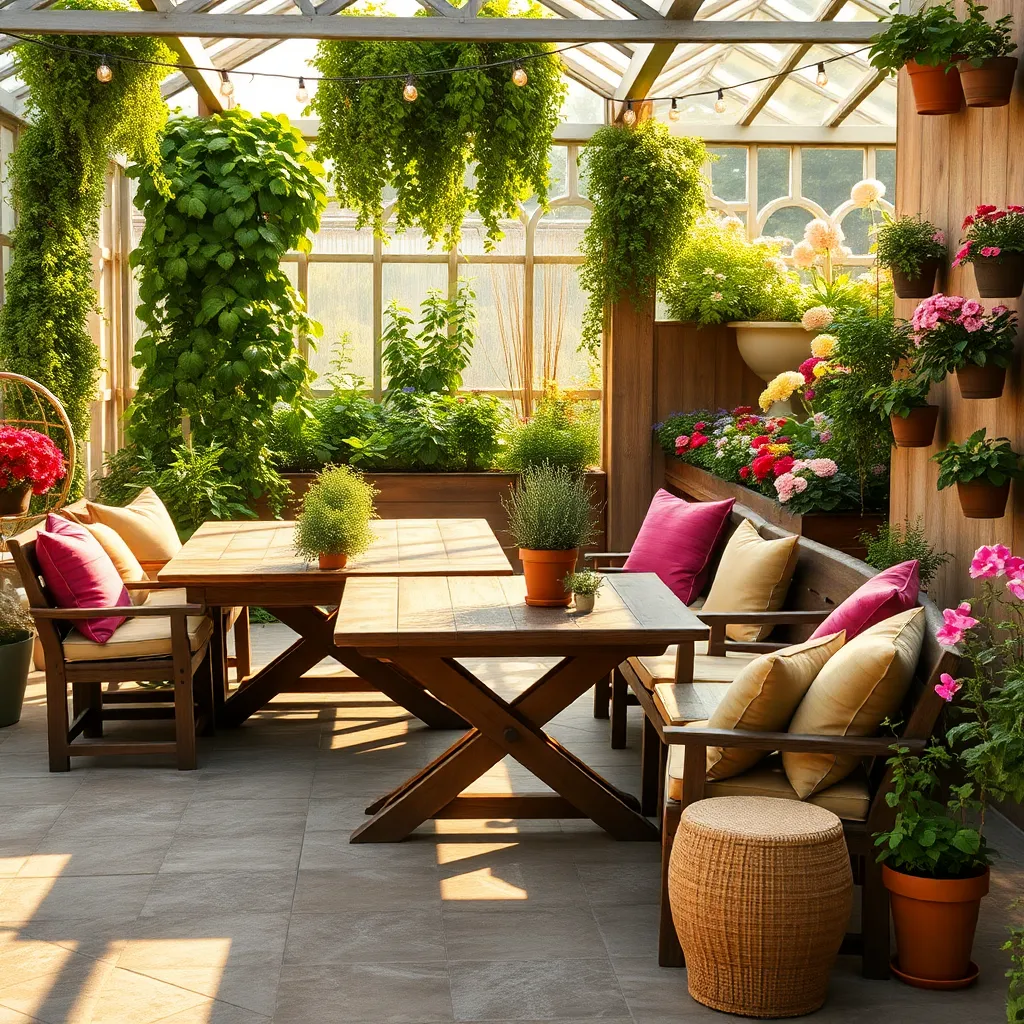
To complement your patio garden, selecting durable outdoor furniture is crucial. Opt for materials like teak, eucalyptus, or powder-coated aluminum, which are known for their weather-resistant properties.
Choosing the right furniture can enhance both the functionality and aesthetics of your garden space. Look for pieces that are not only stylish but also easy to maintain, such as those with removable and washable cushions.
When placing furniture, consider the layout and flow of your garden to ensure comfort and accessibility. Arrange seating areas to take advantage of natural shade or create your own with patio umbrellas or pergolas.
For those with a more advanced setup, consider incorporating built-in planters or tables with integrated storage to maximize space efficiently. This approach not only saves room but also helps in organizing gardening tools and supplies.
Add Color with Portable Pots
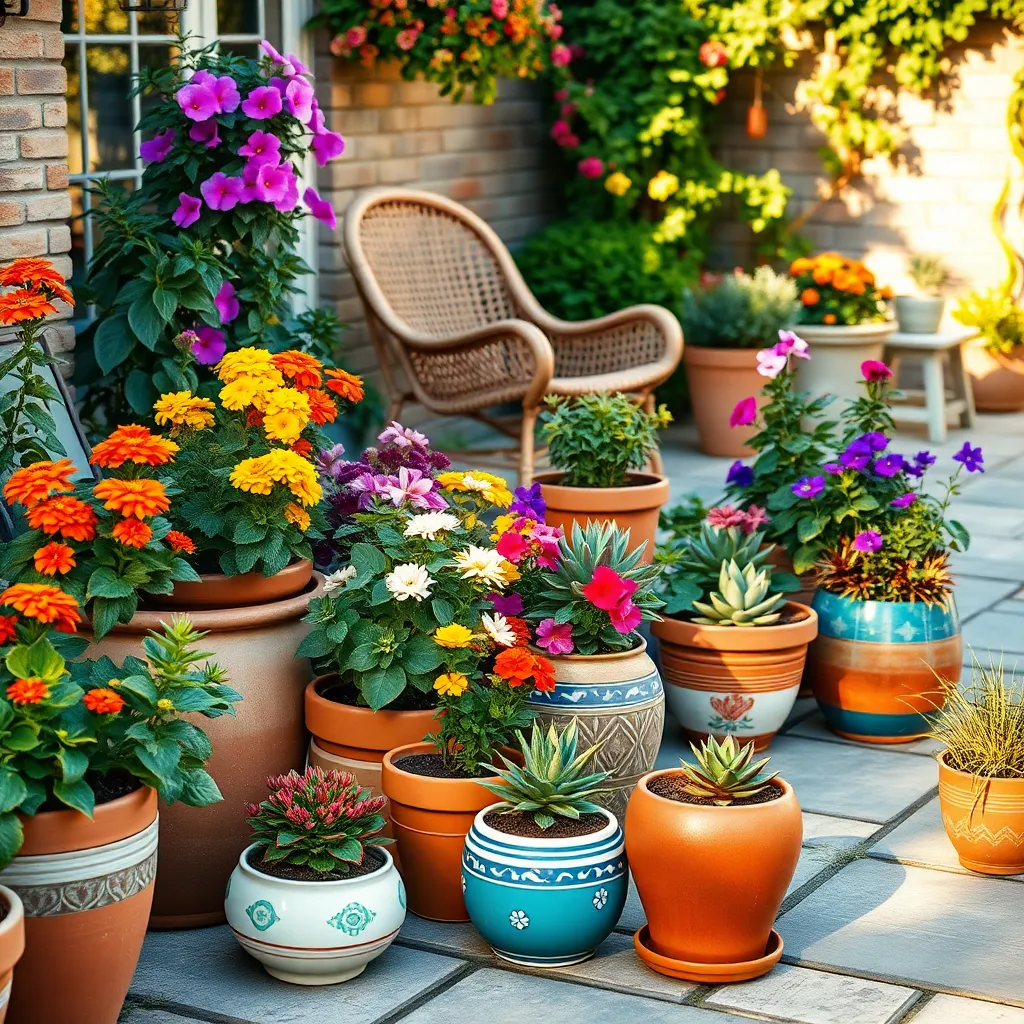
Adding color with portable pots is an excellent way to brighten up your patio and adapt your garden as the seasons change. Choose vibrant, weather-resistant pots that complement your outdoor furniture and bring a pop of color to your space.
Beginners can start with hardy plants such as marigolds and petunias, which thrive in various conditions. Use a high-quality potting mix to ensure good drainage and nutrition, and water these plants regularly, especially during hot weather.
Advanced gardeners might experiment with a mix of annuals and perennials to create dynamic visual interest. Consider using creeping jenny or sweet potato vines for trailing effects, ensuring these pots receive at least six hours of sunlight daily to maintain vibrant growth.
To maintain portability and plant health, use lightweight pots made from materials like fiberglass or plastic. Rotate your pots every few weeks to ensure even sunlight exposure and prevent plants from leaning toward the light.
Enhance Privacy with Tall Plants
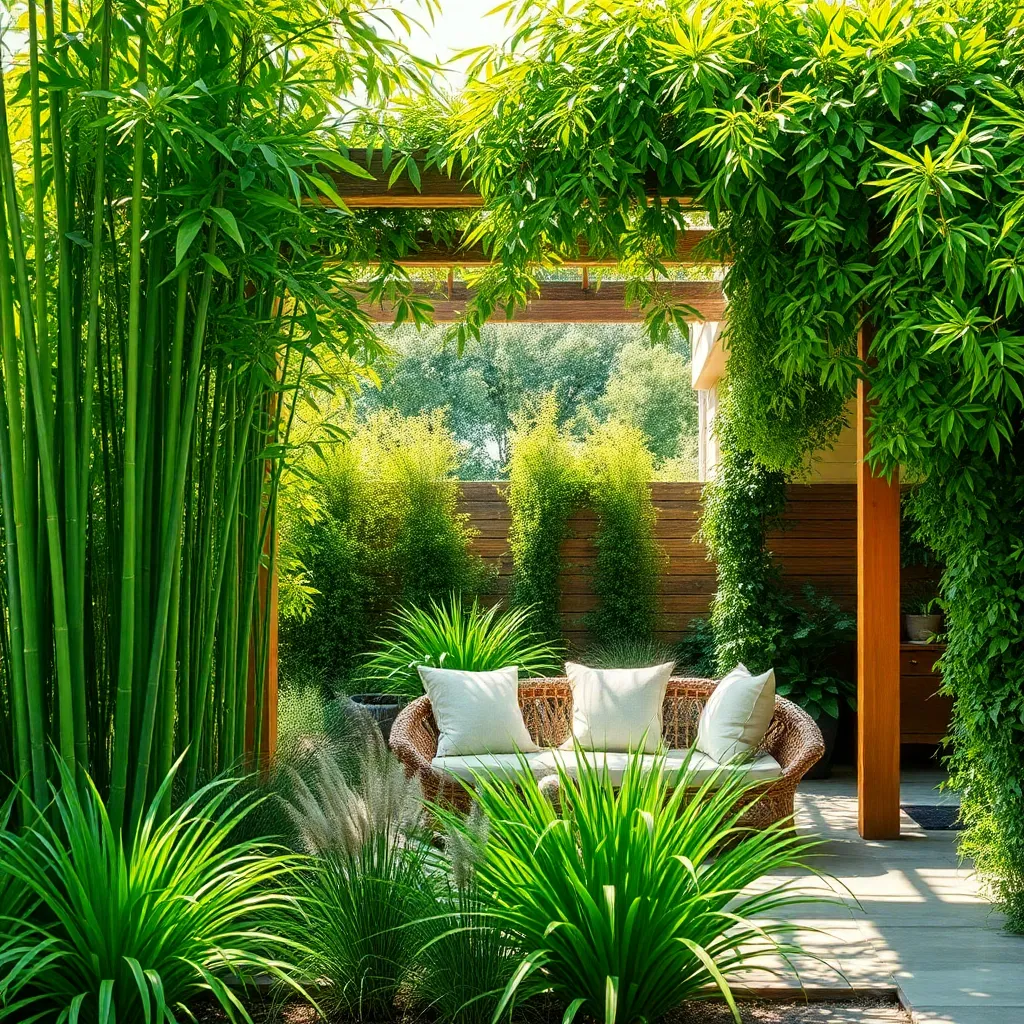
Enhancing privacy with tall plants is an effective way to create a secluded retreat in your patio garden. Begin by selecting fast-growing species such as bamboo, which can reach impressive heights quickly, providing instant coverage.
Bamboo thrives in well-drained, fertile soil and requires regular watering, especially during dry spells. For best results, consider using a barrier to prevent it from spreading uncontrollably, as some varieties can be quite invasive.
If bamboo isn’t suitable for your space, consider using tall grasses like Miscanthus or Pampas Grass. These plants not only provide privacy but also add texture and movement to your garden with their feathery plumes swaying in the wind.
Miscanthus prefers full sun and can tolerate a range of soil types, as long as they are well-drained. To maintain their shape and promote healthy growth, cut back the dead foliage in late winter before new shoots appear in spring.
For those looking for evergreens, consider planting tall shrubs like Thuja or Leyland Cypress. These evergreen options retain their foliage year-round, offering continuous privacy and a lush green backdrop.
Both Thuja and Leyland Cypress thrive in full sun and well-drained soil, needing regular watering until well-established. Prune them annually to control their height and shape, ensuring they don’t overshadow other plants in your garden.
Integrate Edibles in Decorative Pots
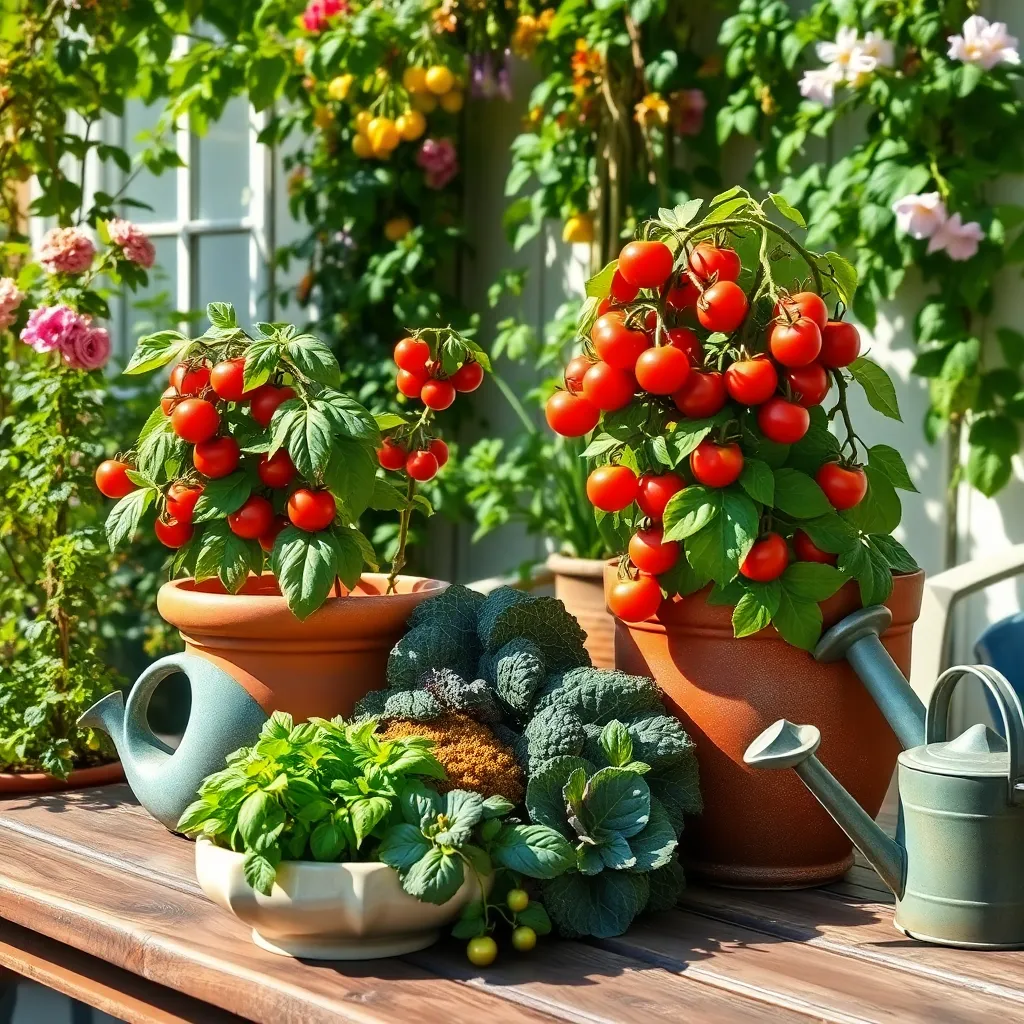
Bringing edibles into decorative pots on your patio can be both visually appealing and rewarding. Start with easy-to-grow herbs like basil or mint, which thrive in well-draining soil and need about six hours of sunlight daily.
For an attractive display, consider pairing plants with complementary colors and textures. Plant vibrant nasturtiums alongside lettuces; the nasturtiums not only add a pop of color but also repel pests naturally.
Use containers that have adequate drainage holes to prevent root rot. Watering is crucial; aim to keep the soil consistently moist but not waterlogged, checking frequently during hot weather.
Advanced gardeners can explore vertical planting techniques using tiered planters or hanging baskets. Incorporate strawberries or cherry tomatoes, which require a nutrient-rich potting mix and regular feeding for a bountiful harvest.
Create Ambiance with Solar Lighting
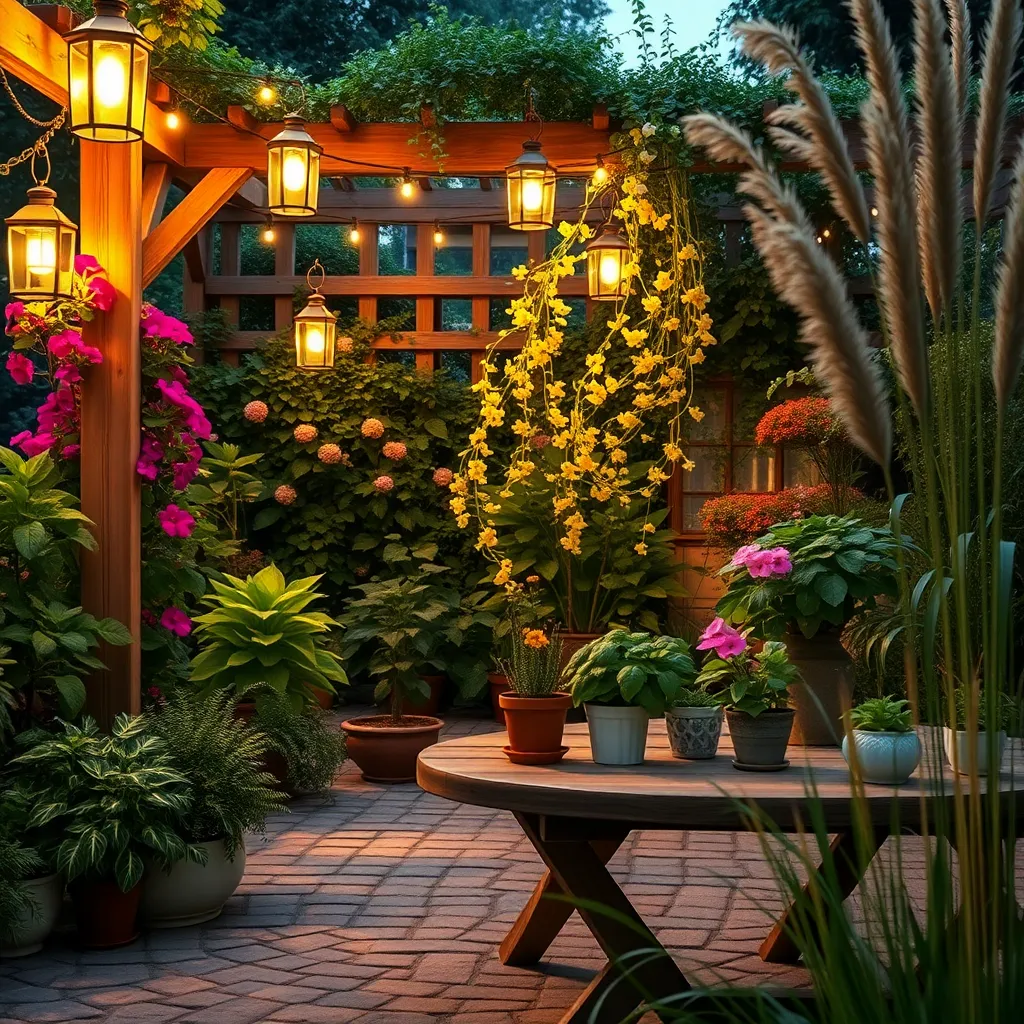
Transform your patio garden into a serene retreat by incorporating solar lighting. These lights are not only energy-efficient but also offer a soft glow, creating a welcoming ambiance for evening relaxation.
Installing solar lights is straightforward and requires minimal maintenance. Simply position them in areas where they will receive ample sunlight during the day to ensure they illuminate beautifully at night.
Consider using pathway solar lights to line walkways or bed borders, which not only enhances safety but also highlights your garden’s natural beauty. Lantern-style solar lights can be placed on tables or hung from hooks to add an elegant touch to your outdoor space.
For a more whimsical effect, choose string solar lights that can be draped around trees or trellises. This style of lighting is perfect for creating a festive atmosphere during gatherings or quiet evenings outdoors.
Opt for Weather-Resistant Containers
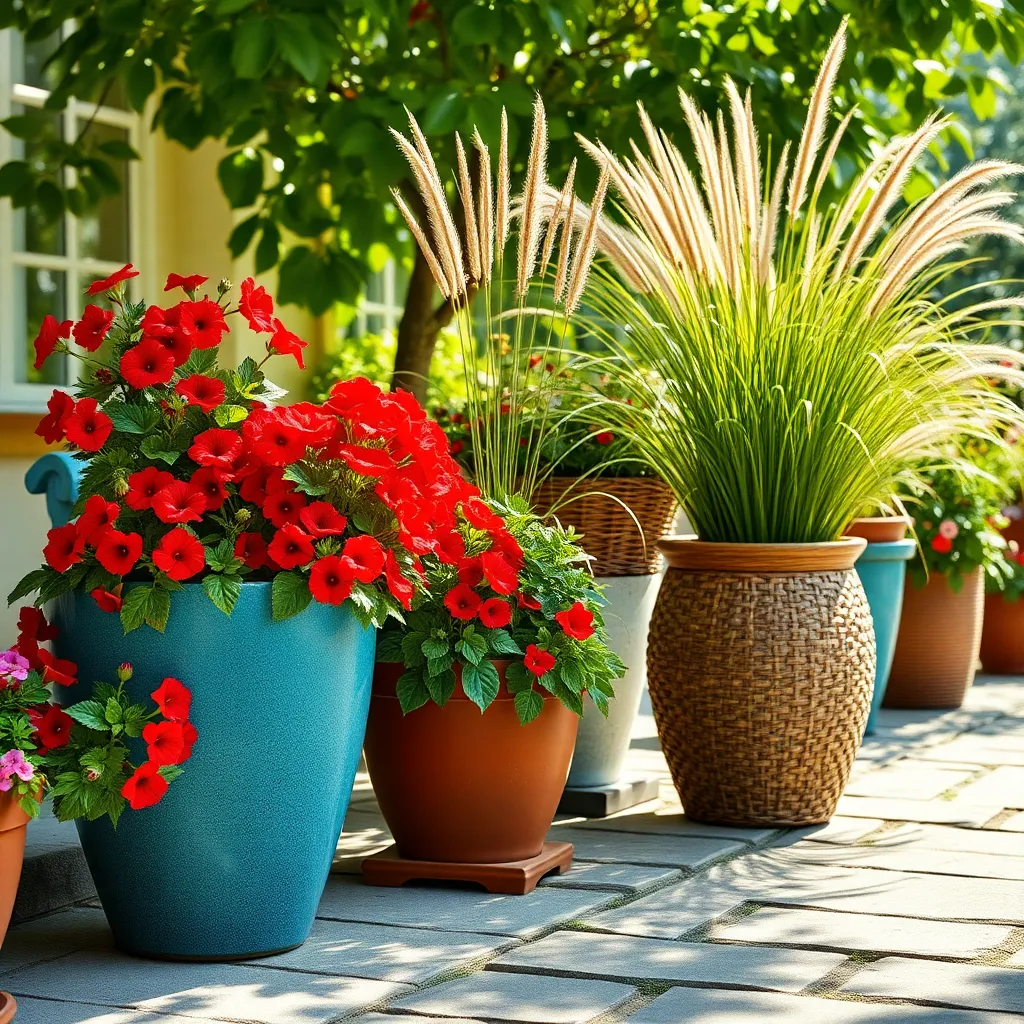
Choosing the right containers for your patio garden can make a significant difference in the longevity and health of your plants. Weather-resistant containers are essential for outdoor settings, as they can withstand the elements and protect your plants from extreme temperatures.
Opt for containers made from materials like fiberglass, heavy-duty plastic, or glazed ceramic, as they are durable and can handle various weather conditions. These materials are also lightweight compared to traditional options like concrete or clay, making it easier to rearrange your patio setup whenever desired.
Consider the size and drainage of your containers to ensure optimal plant health. It’s vital to select containers that provide ample space for root growth and include sufficient drainage holes to prevent waterlogging, which can lead to root rot.
For those in particularly harsh climates, adding insulation to your containers can protect roots from temperature extremes. You can line the inside of your pots with bubble wrap or use specialized insulating materials designed for planters to help maintain a stable environment for your plants.
Remember to adjust your watering schedule based on the material of your containers, as some, like plastic, retain moisture longer than others. This small adjustment can make a big difference in maintaining the ideal soil moisture levels, promoting healthier plant growth.
Incorporate Water Features Mindfully
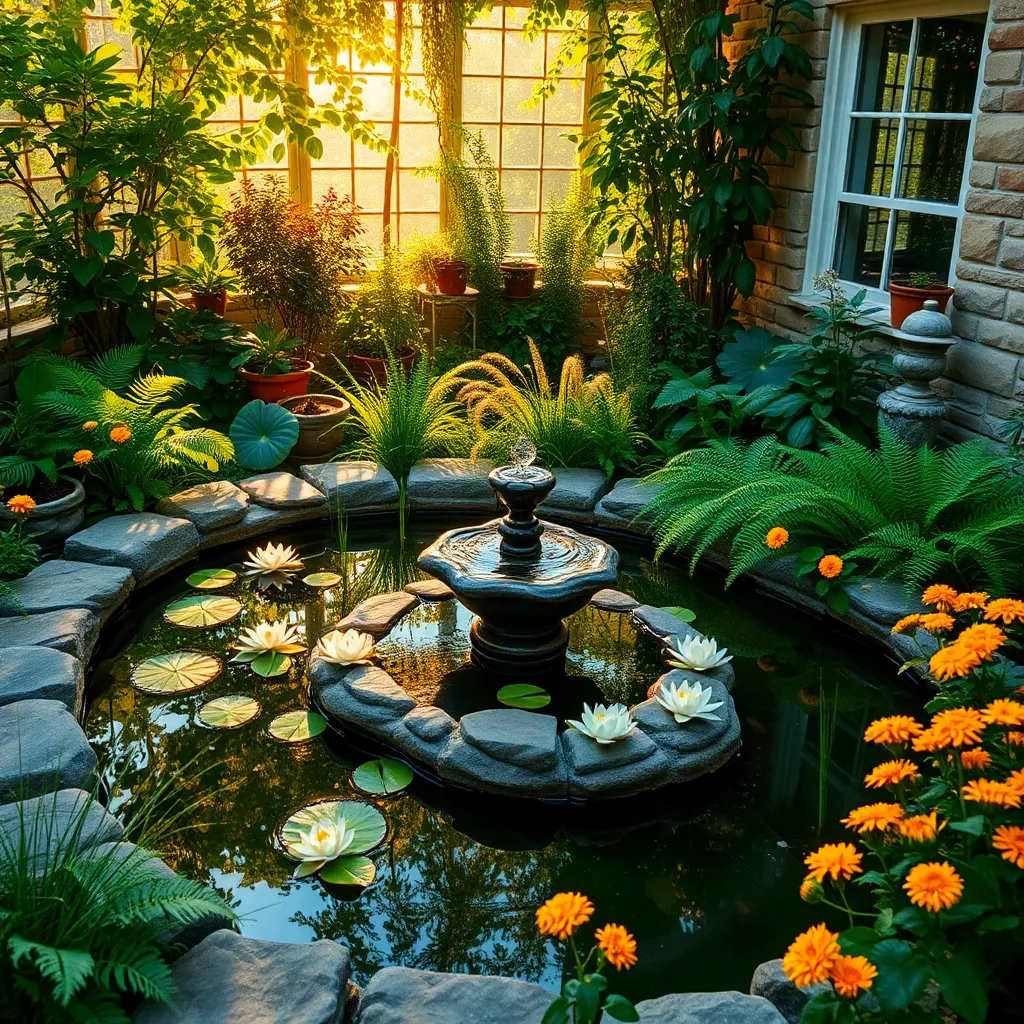
Incorporating water features into your patio garden can create a tranquil and inviting atmosphere. Consider starting with a small fountain or a bird bath, which are both easy to maintain and space-efficient.
When choosing a water feature, think about the size and style that best complements your existing garden design. A small, self-contained water fountain can be a perfect choice for those with limited space or for beginner gardeners.
Be mindful of the water feature’s location to ensure easy access for maintenance and cleaning. Placing your water feature near a power source or a water tap can make regular upkeep more convenient.
For those looking to attract wildlife, a bird bath can be a delightful addition. Ensure it’s placed in a spot that provides both sun and shade throughout the day, maintaining a comfortable temperature for visiting birds.
Advanced gardeners might consider incorporating plants that thrive in or around water features, such as water lilies or marginal plants like irises. These plants not only enhance the beauty of the water feature but also help to maintain water quality by absorbing excess nutrients.
To keep your water feature and surrounding plants healthy, monitor water levels regularly, especially during hot weather when evaporation rates are higher. Adding a few floating plants can help shade the water and reduce algae growth, keeping the feature cleaner longer.
Use Trellises for Climbing Plants
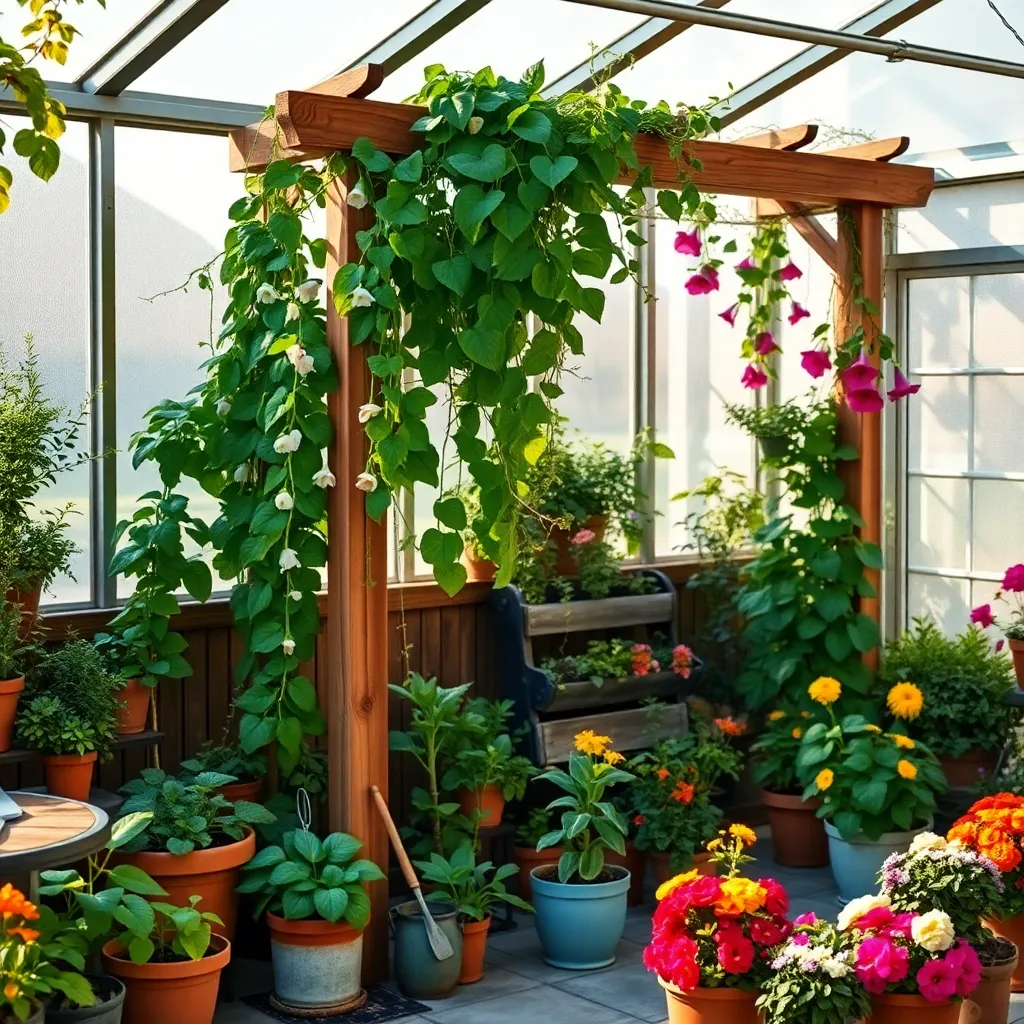
Trellises can transform your patio garden by providing support for climbing plants, adding vertical interest and maximizing space. Choose trellises made from durable materials like wood or metal, ensuring they can withstand the weather conditions in your area.
When selecting plants for your trellises, consider fast-growing climbers like sweet peas and morning glories for a vibrant display of color. Ensure your chosen plants suit your climate and patio’s sun exposure—most climbers prefer full sun to partial shade.
To promote healthy growth, plant your climbers in well-draining soil enriched with organic matter. Water regularly, especially during dry spells, but avoid overwatering as this can lead to root rot.
For more advanced gardeners, try training your plants through pruning to achieve a desired shape or coverage on the trellis. Use soft plant ties to attach stems gently, avoiding any damage that could inhibit growth.
Establish Zones with Rugs and Mats
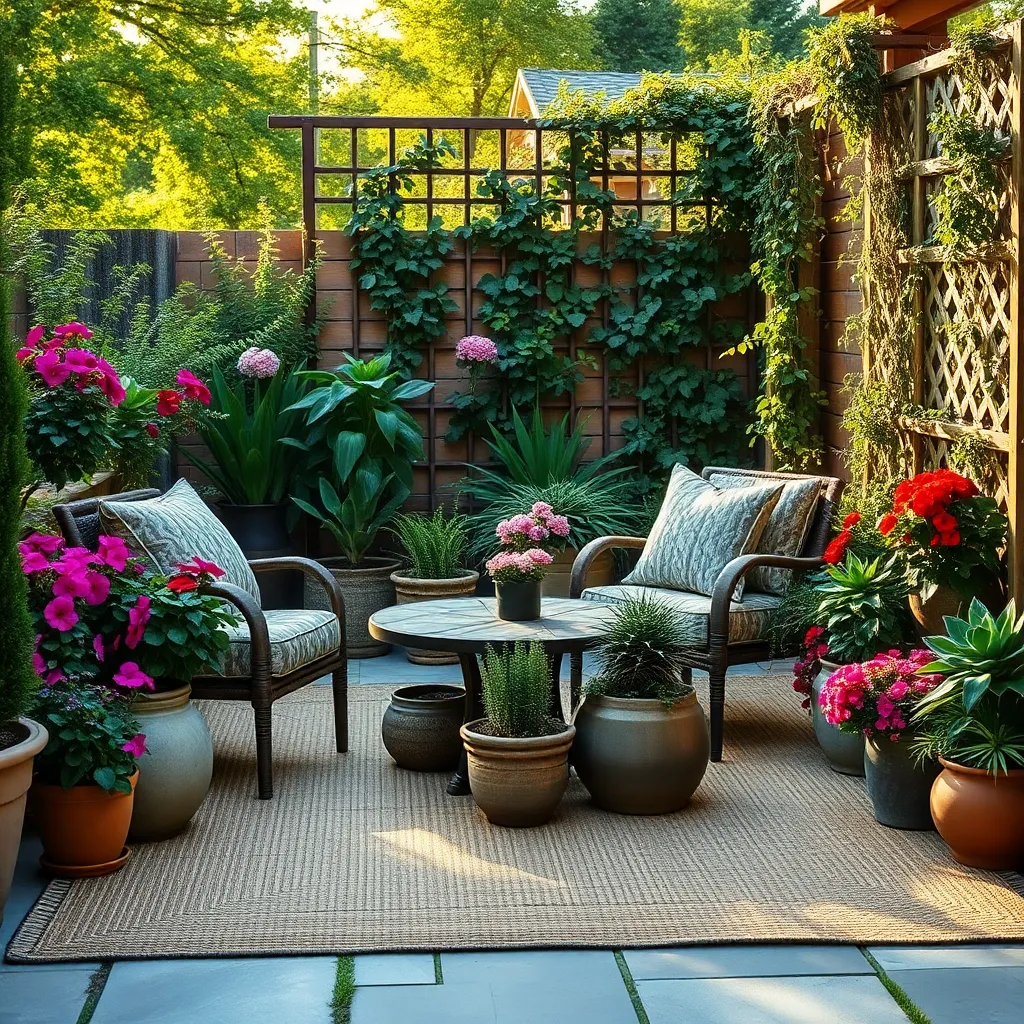
Incorporating rugs and mats into your patio garden is a simple way to define different zones and create a cozy atmosphere. Select outdoor rugs made from durable, weather-resistant materials to ensure they withstand the elements throughout the seasons.
When choosing rugs, consider the size of your space and the zones you want to create. For example, a larger rug can delineate a dining area, while a smaller mat might highlight a reading nook.
Use vibrant colors or patterns to add visual interest and complement your garden’s natural beauty. This can create a delightful contrast with the greenery and bring a unique charm to your patio.
Advanced gardeners can experiment with layering rugs to add depth and texture to the space. Keep in mind that layered rugs should coordinate well in terms of color and style to avoid visual clutter.
Include Scented Plants for Aroma
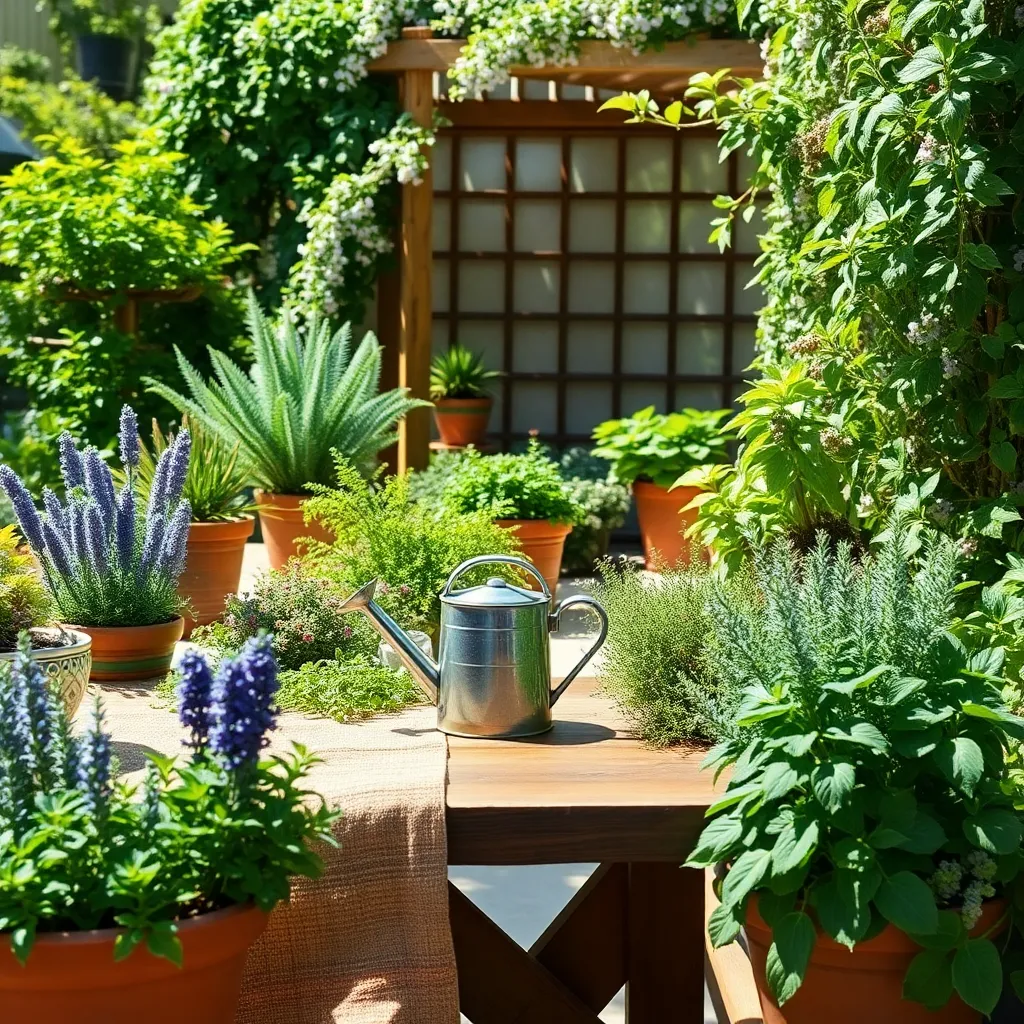
Add a sensory dimension to your patio garden by incorporating scented plants that will delight your senses. Choose plants that thrive in your local conditions to ensure they flourish and provide a consistent aroma throughout the growing season.
Consider planting lavender, a hardy perennial known for its soothing scent and low maintenance needs. Lavender prefers well-drained soil and plenty of sunlight, making it an excellent choice for sunny patios.
For a more tropical vibe, try growing jasmine, which releases a sweet fragrance, especially in the evening. Jasmine vines require a support structure to climb and do best in warm temperatures with moderate watering.
Herbs such as rosemary and mint not only add fragrance but are also practical for culinary use. Rosemary thrives in well-drained soil and full sun, while mint prefers moist soil and can tolerate partial shade, making it versatile for various patio conditions.
Adapt to Seasons with Plant Swaps
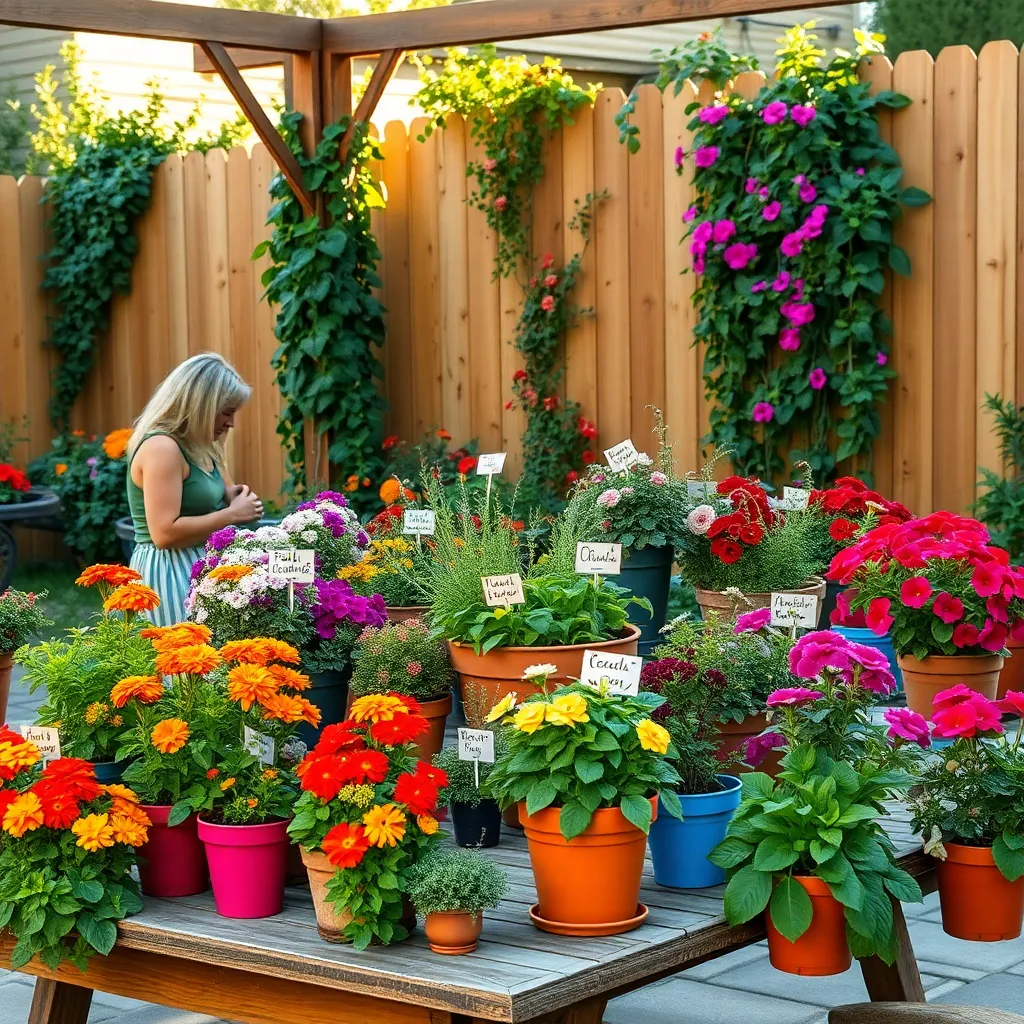
As the seasons change, it’s essential to adapt your patio garden to thrive year-round by swapping plants. This practice helps maintain a vibrant and healthy garden, ensuring it remains visually appealing and productive regardless of weather changes.
Begin with understanding the specific requirements of your plants, such as light, temperature, and water needs. For instance, replace summer-flowering annuals with hardy perennials like pansies or ornamental kale as the temperatures drop.
Consider using planters and containers to make plant swapping easier and more efficient. Opt for lightweight containers that are easy to move, allowing you to provide optimal conditions for each season’s plants.
Experiment with different plant combinations to find what works best for your space and climate. You might try pairing heat-loving herbs like rosemary with sunflowers in the summer, then switch to winter greens like kale and chard in the colder months.
For more experienced gardeners, delve into the microclimates of your patio to maximize plant performance. Use areas shielded from wind or sun to extend the growing season of certain plants, offering a natural buffer against harsh conditions.
Conclusion: Growing Success with These Plants
In exploring ’15 Inspiring Patio Garden Ideas,’ we’ve uncovered key relationship concepts that extend beyond horticulture, touching on the beauty of shared spaces, the importance of nurturing growth, and the joy of collaborative creativity. From creating cozy corners for intimate conversations to cultivating vibrant plant life as a metaphor for partnership, each idea reinforces the essential elements of communication, compromise, and connection in relationships. By incorporating these concepts, you can transform your patio into a haven that reflects and enhances your relationship’s uniqueness.
As an immediate next step, choose one idea that resonates with you and your partner, and dedicate time this weekend to bring it to life. Whether it’s planting a small herb garden or setting up a serene seating area, taking that first step will breathe new life into your shared space and strengthen your bond.
Don’t let these inspiring ideas slip away! Bookmark this article now to revisit whenever you need a fresh perspective or a boost in your relationship journey. Remember, a thriving relationship, much like a flourishing garden, requires ongoing care and attention. By nurturing both, you’re paving the way for enduring success and happiness together.

